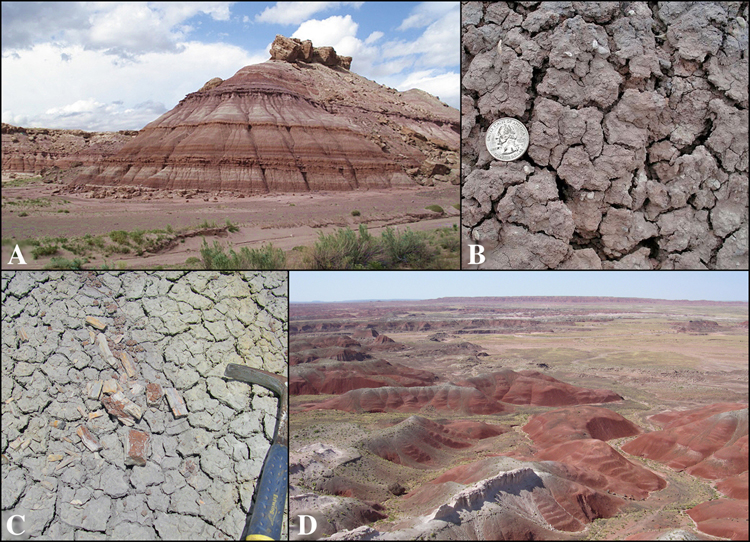
 |
| Figure 4: Opportunities and problems present themselves in the superb outcrops of muddy facies of the Colorado Plateau early Mesozoic, showing near 100% outcrop (above). Mudstones are often bentonitic with a partial volcanic source, which means there are datable ashes, however it also means that the outcrop surfaces present horrendous sampling problems where freshness and competency are at premium as for geochemistry or paleomagnetics. Two examples include: A (above), Brushy Basin Member of the Morrison Formation west of Green River, Utah (from http://en.wikipedia.org/wiki/Morrison_Formation; B, typical “popcorn” surface of bentonitic mudstone of the Brushy Basin Member of the Morrison Formation west of Green River, Utah (same source as A); C, “popcorn” surface of the Chinle Group near Bluewater Creek, NM (Stop 1 of Lucas et al., 2007), with fragmentary weathered metoposaur amphibian dermal bones; D, outcrops of bentonitic Painted Desert Member of the Petrified Forest Formation of the Chinle Group in Petrified Forest National Park with the U-Pb dated Black Forest Bed (Riggs et al., 2003) is the white bed in foreground. |